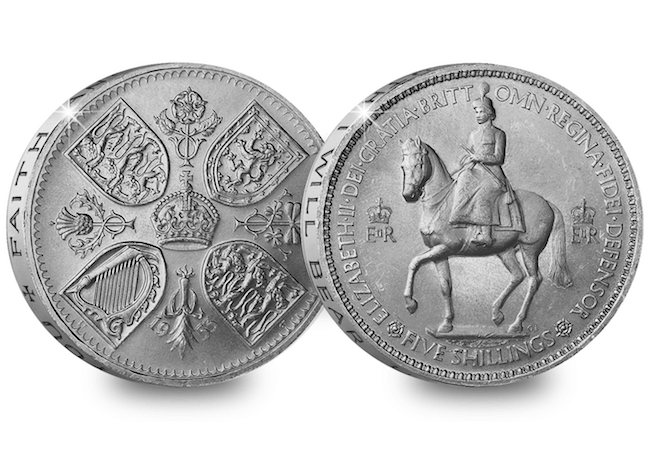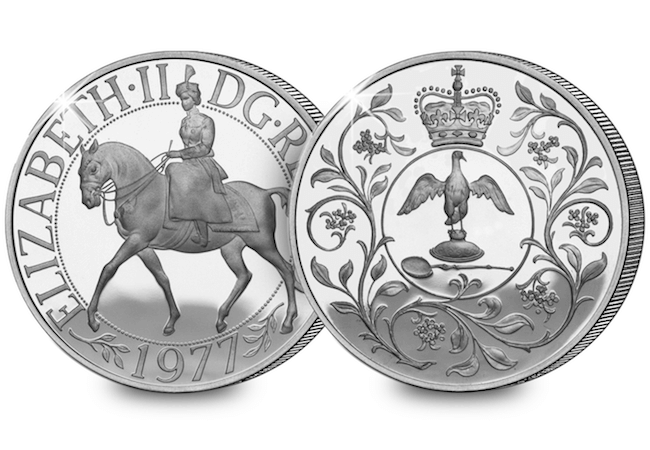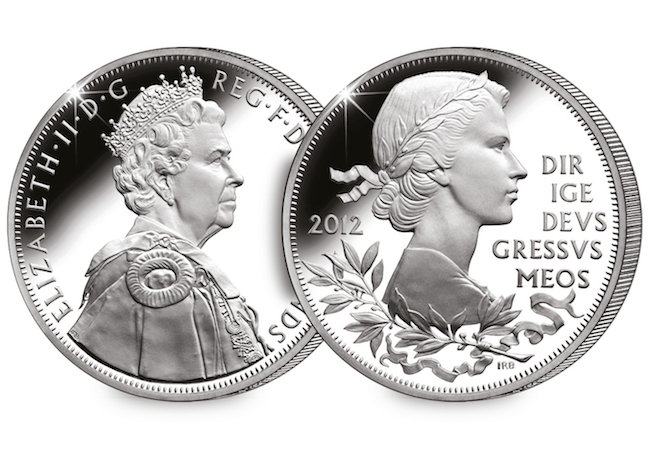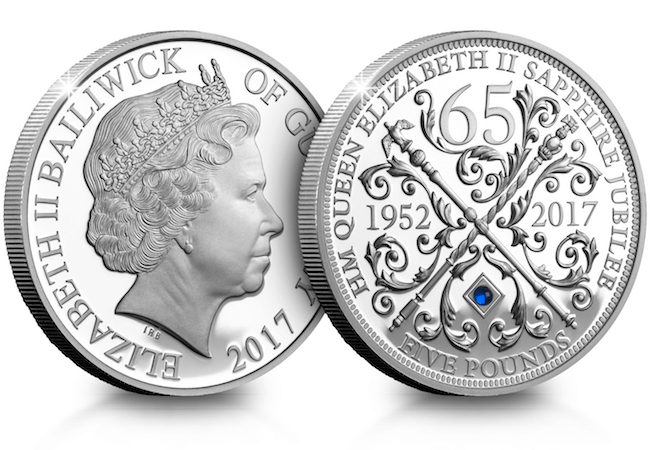Royalty
Released today: the new 2017 United Kingdom Prince Philip £5 coin
On 4th May Buckingham Palace announced that HRH the Duke of Edinburgh, after 70 years at Her Majesty’s side, would be retiring from public duty. To mark this record-breaking achievement, and celebrate his 70 years of service to Her Majesty the Queen, The Royal Mint have today released a brand new design in tribute to Prince Philip.
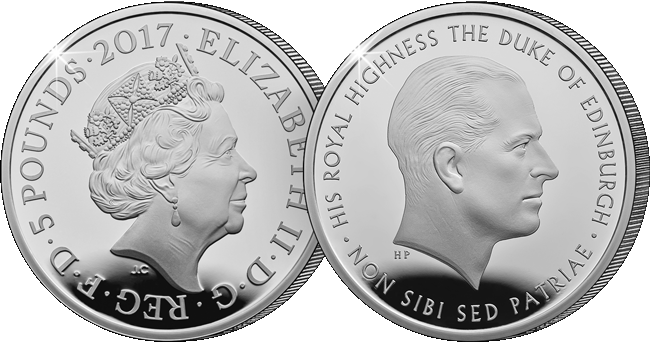
The design features Humphrey Paget’s (1893-1974) portrait of The Duke of Edinburgh. Paget’s legacy was much more than just this portrait though – he is now considered to be one of the most exceptional coin artists of the 20th century.
The Royal Mint’s coin designer Lee R. Jones has added to the portrait to include a table inscription and an edge inscription. The final design has been officially approved by Prince Philip himself.
The coin is available in Gold Proof, Silver and Brilliant Uncirculated Base Metal. Here’s your guide to the new 2017 United Kingdom Prince Philip £5 coin range:
Perfect Quality. Very Affordable.
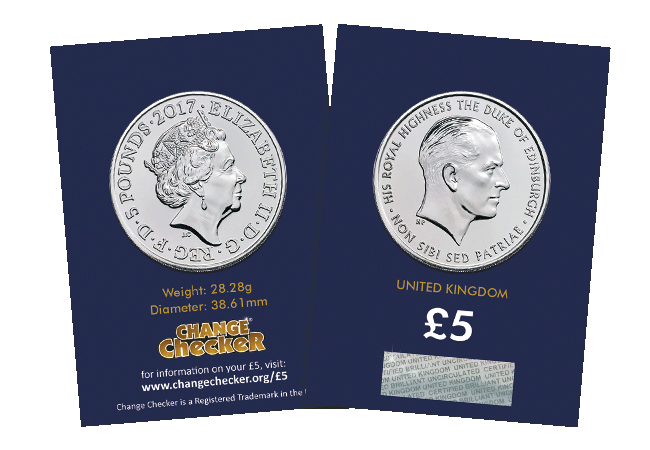
The Prince Philip CERTIFIED BU £5 Coin
The Royal Mint is releasing a brilliant uncirculated base metal version of the Prince Philip £5 coin. These coins have been specially struck and carefully handled to ensure that they are free of scratches and chips found amongst circulating coins.
Known as Brilliant Uncirculated (BU), they are available for £13.00 in a Royal Mint Presentation Pack or £10.99 in a Change Checker Certified Brilliant Uncirculated Collector Card.
Silver Proof – the Collector’s Favourite.
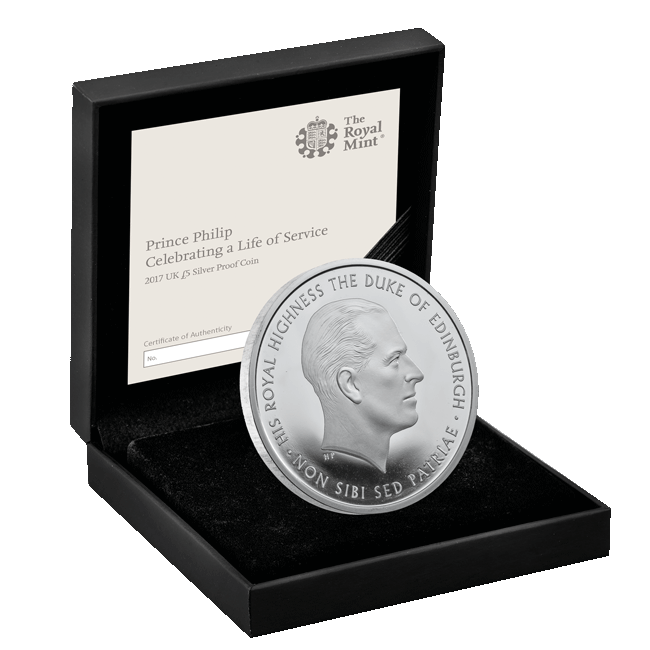
UK 2017 Prince Philip Silver Proof £5
The Silver Proof £5 coin is firmly established as the most sought-after coin amongst collectors because they have all the qualities that collectors really desire.
- Precious metal content – struck from 925/1000 Sterling Silver
- Strictly Limited Edition – just 3,000 coins. That’s EVEN LESS than the last UK Prince Philip coin issued for his 90th birthday. With a mintage of 4,599 it was, at the time, the most limited Silver Proof UK £5 coin ever issued.
- The perfect Proof Finish – even better than Brilliant Uncirulated. Proof coins are struck several times using specially polished dies to create a flawless finish with a perfect mirrored background. The ultimate coin quality.
The Gold Standard
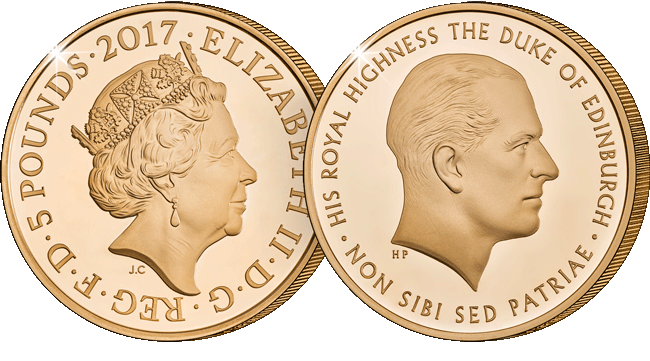
UK 2017 Prince Philip Gold Proof £5
For the ultimate limited edition, a Gold Proof coin has also been issued. Struck in 22 carat Gold, just 300 of these coins have been authorised for release.
If you’re interested …
You can own one of the Prince Philip £5 Coins. Click here to see the range >>
The history of Her Majesty’s Jubilee crown coins…
This year Her Majesty Queen Elizabeth II celebrates her Sapphire Jubilee – the first ever British monarch in history to do so. To mark the occasion, a brand new British Isles £5 Proof coin has been issued featuring a sparkling sapphire crystal as a truly fitting tribute to Her Majesty’s record-breaking reign.
In light of its release, I thought I’d take a look at the history and timeless designs of previous British Jubilee commemorative coins issued during the Queen’s reign…
The 1953 Coronation UK Crown
The 1953 crown was issued to celebrate Her Majesty’s Coronation and was the very first UK commemorative coin to be issued during Queen Elizabeth II’s reign. Unusually, the obverse portrait features an engraving of the Queen riding on horseback at the Trooping of the Colour ceremony in 1953 with an edge inscription which reads ‘Faith and Truth I will bear Unto You’, taken from the Coronation Oath. The Coronation crown was to form the basis of future Jubilee commemorative crown designs and still remains one of the most sought-after by collectors. It is often the starting point for many great collections.
The Silver Jubilee UK Crown
In 1977, Her Majesty celebrated 25 years on the throne – her Silver Jubilee and the first of her reign. To celebrate the occasion, a new commemorative crown was issued by the Royal Mint designed by renowned sculptor and designer of the Queen’s portrait on the UK’s stamps, Arnold Machin. The coin’s reverse design is focused upon the Coronation theme and features the Ampulla and anointing spoon from the Royal regalia surrounded by a heraldic floral pattern and the Crown.
The coin’s obverse takes inspiration from the 1953 Coronation Crown, showing a newly designed image of the Queen on horseback. Unusually, this is the only crown in British history not to feature an edge inscription or date on its reverse and is one of the last crowns to be issued with a face value of 25 pence (commemorative crowns issued after 1990 have a face value of £5), which makes it continually sought-after among collectors.
The Golden Jubilee UK Crown
2002 saw the Queen’s Golden Jubilee, marking her 50th year on the throne and the release of a new commemorative, this time, issued with a face value of £5 . The coin was designed and sculpted by Ian Rank-Broadley FRBS, who created the fourth portrait of the Queen on the obverse of our UK circulating coins. The reverse design once again, features a newly designed image of Her Majesty on horseback inspired by the original Coronation crown design. The reverse features a specially designed portrait of the Queen.
The Diamond Jubilee UK Crown
In 2012, the nation witnessed the Queen’s Diamond Jubilee. Sixty years on the throne is a landmark milestone and one that has only been reached by one other monarch – Queen Victoria in 1897. This is the first ever coin to be struck to mark a Diamond Jubilee because there were no special coins issued for Queen Victoria’s.
Special one-off portrait designs
To mark such a momentous occasion, Ian Rank-Broadley FRBS was once again commissioned to design the coin. The obverse features a portrait of Her Majesty crowned and wearing the robes of the Order of the Garter, inspired by the sculpture that appears in the entrance of the Supreme Court building in Parliament Square. The reverse design shows a portrait of the Young Queen inspired by Mary Gillick’s portrait of Her Majesty, the very first to feature on the obverse of the UK coins in 1953.
The Sapphire Jubilee £5 Guernsey Coin
2017 marks Her Majesty Queen Elizabeth II’s 65th year on the throne, the first ever British Monarch in British history to do so. To mark such a landmark, historic occasion, this brand new limited edition £5 Proof coin has been issued by the Bailiwick of Guernsey.
Fully approved by Her Majesty the Queen, the design by ex-Royal Mint engraver, Michael Guilfoyle features the Sovereign’s crossed sceptres from the Coronation regalia with the number 65 marking the years Her Majesty has been on the throne with a stunning crystal inset into the design representing a blue sapphire.
You can now own the new Guernsey Sapphire Jubilee Proof £5 Coin today.
With a low edition limit of just 4,950 worldwide in such a landmark year, demand for this limited edition special Proof coin is expected to be high.
Revealed: The Royal Mint UK commemorative coin designs for 2017
Each year, The Royal Mint marks important British anniversaries, events or accomplishments on our coins and today we are pleased to reveal UK’s new coin designs for 2017.
Scroll down and I’m sure you’ll agree 2017 is set to be another significant year for coin collectors, with some exceptional designs that are sure to look resplendent when struck to the ‘collector’s favourite’ Proof finish…
The Sir Isaac Newton 50p
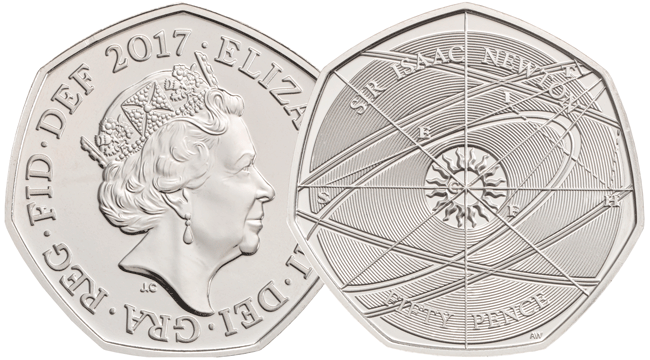
This 50p coin has been issued to mark the outstanding achievements of Sir Isaac Newton and has been designed by Aaron West.
The 50p coin commemorates the revolutionary scientific and mathematical genius, Sir Isaac Newton and his remarkable legacy. He discovered the laws of gravity and motion and remains one of the most famous men in history. This coin really needs to be seen in real life as the concentric design cleverly catches the light differently from every angle.
The Jane Austen £2 Coin

The 2017 Jane Austen UK £2 Coin
2017 sees the 200th anniversary of Jane Austen’s death – and this £2 has been specially designed to commemorate one of the most famous authors of all time. Featuring an unusual ‘cameo’ design and Austen’s signature, this coin is sure to be highly sought-after.
The First World War Aviation £2 Coin

The 2017 First World War Aviation UK £2 Coin
The latest in The Royal Mint’s series of two pound coins commemorating World War I, this particular issue pays tribute to the role of the air force in the conflict. Designed by tangerine the striking aerial perspective is a first for a UK £2 coin.
The House of Windsor £5 Coin
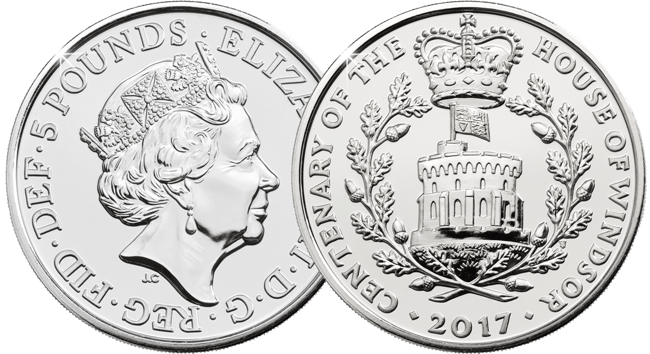
The 2017 House of Windsor UK £5 Coin
100 years of Royal tradition are honoured with this exceptional £5 coin – commemorating the Centenary of the House of Windsor. In 1917 King George V changed the name of the British Royal Family from Saxe-Coburg and Gotha to the now familiar Windsor. The coin’s pleasingly traditional design features Windsor Castle.
The King Canute £5 Coin

The 2017 King Canute UK £5 Coin
In a nod to Britain’s storied history, the second 2017 £5 coin marks the 1,000th anniversary of King Canute’s accession to the throne. Most famous for his attempts to prove his power by turning back the tide, Canute is also hailed as the first ‘king of all England.’
Some of these designs are really exceptional, and they are certain to become more sought-after in years to come. Which is your favourite? Let us know in the comments!
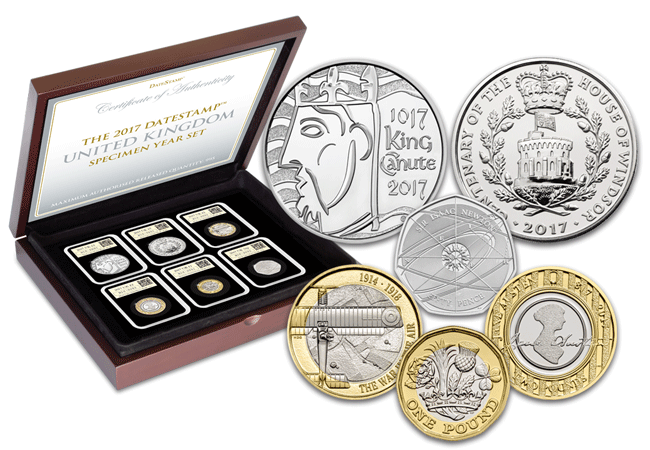 If you’re interested…
If you’re interested…
You can now own all the new 2017 coins in the DateStamp™ UK Specimen Year Set. Each coin has been struck to Brilliant Uncirculated quality and encapsulated alongside a 1st Class Stamp officially postmarked by Royal Mail with the issue date – 1/1/2017. Click here for more details…


